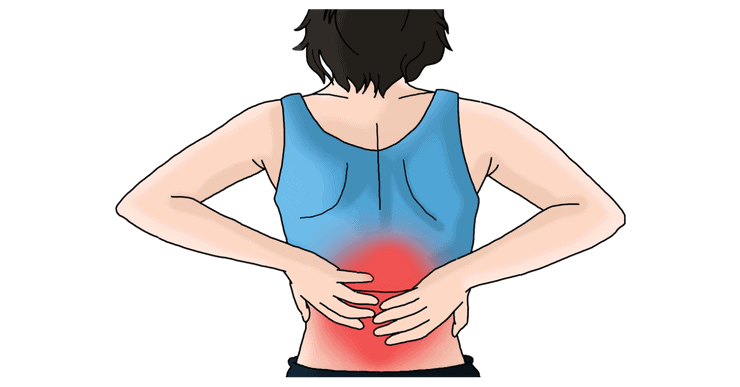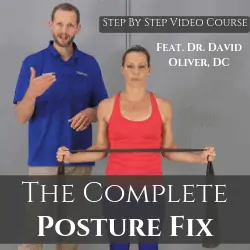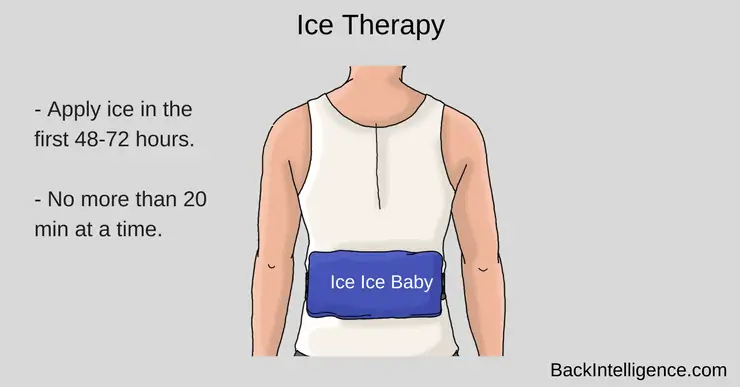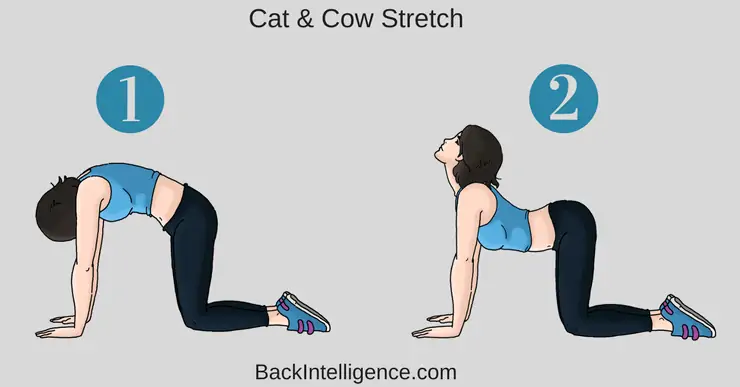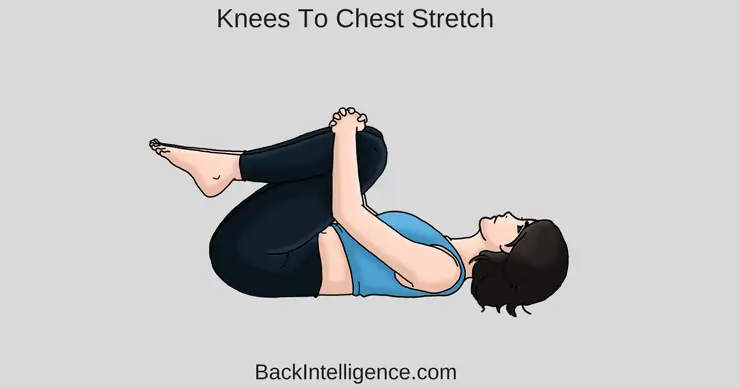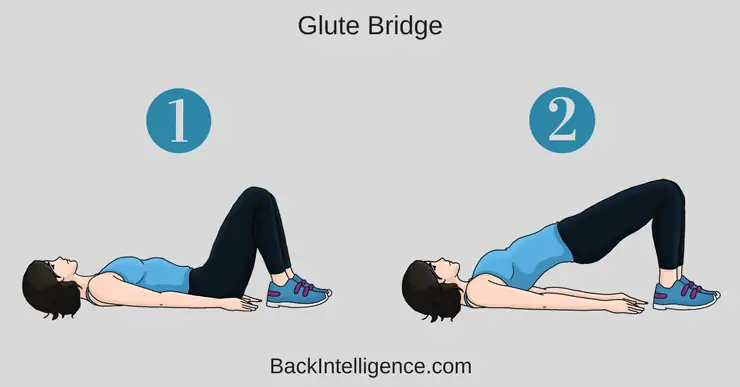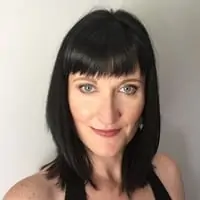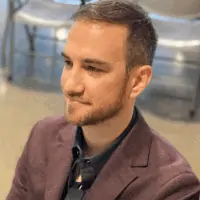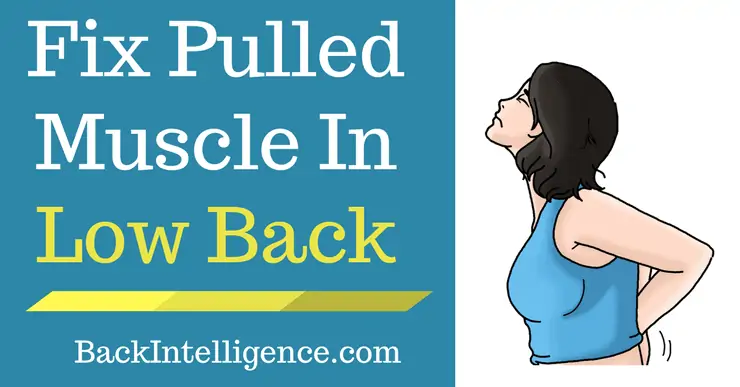
A pulled muscle in the lower back can make everyday activities, such as sleeping and working, extremely difficult. Luckily, most pulled muscles heal fairly quickly and there are a number of treatments that you can try to help speed up the healing process.
While you can pull the upper back too, this article will focus on lower back pulled muscle. Your lower back is prone to injury because it bears most of the weight while performing everyday activities such as bending, twisting, and lifting.[1]
Pulled Muscle In Lower Back Symptoms
If you pull a muscle in your lower back you may experience a range of symptoms from a dull, nagging ache, to debilitating pain, including:
If you pull a muscle in your lower back you may experience varying intensities of pain, from a dull, nagging ache, to sharp pain.[2]
These symptoms can include:
- Acute Lower back pain that persists for up to 6 weeks.[3][4]
- Lower back pain that is usually localized, that may radiate into your buttocks, but usually does NOT radiate into your legs.[1][2][3][4]
- Lower back may be tender to the touch.[3][4]
- Restricted lower back range of motion.[1][3]
- Lower back stiffness.[1][4]
- Abnormal posture due to pain and stiffness in the lower back.[1]
- Muscle spasm at rest or with activity.[1][3][4]
- Guarding of the surrounding muscles.[4]
Common Causes of Lower Back Pulled Muscle
- Lifting a heavy object[1]
- An accident or injury[1][4]
- Improper lifting technique
- Twisting while lifting
- A sudden fall or jerky movement
- Certain twisting sports, such as golf and tennis[6]
Pulled muscles can be classified as either:
Strains (more common) – A tendon or a muscle that is stretched or torn.
- Strains are typically caused by an overload and stretching of the muscle and tendon that results in a partial or complete tear.
Sprains – A ligament that is torn or stretched.
- Ligaments connect bone to bone at a joint, so this is considered a more serious injury and takes longer to recover from.
No matter which one you have, the treatment is the same for both.
The Complete Posture Fix (With Dr. Oliver)
Fix your Rounded shoulders & Fwd Head posture, get out of pain and increase your mobility.
Learn More
3 Best Treatments for Pulled Muscles In Lower Back
Lower back pulled muscles tend to heal relatively quickly, with 90% of cases healing within a month. However, treatment may help to alleviate your symptoms and speed up healing.
#1. Ice for first 48-72 Hours
Apply ice packs for 15 to 20 minutes, every couple of hours, to the area of injury for the first 48-72 hours.
Ice Therapy helps to help minimize inflammation in the area.[1][3]
How about heat? Avoid heat initially as it can make things worse… You may only apply heat after first 72 hours or so… Only apply heat once the pain has lessened and becomes dull.
#2. Self Massage Therapy
Massage therapy can help to increase blood flow to the lower back, which helps to promote healing.[5] It also helps to loosen up tightened lower back muscles, which might be caused from those muscle spasms. While you can go see a massage therapist, you could also do self massage from your own home! Pick up a tennis ball and roll your lower back.
Note: You can also use a trigger point massager and foam roller to work on your pulled muscle. To read more about how to self massage click here.
#3. Light Exercises And/Or Dynamic Stretches For Low Back
This roundtable discussion with doctors discussed the importance of movement and exercise for people with a low back spasm, and not resting too much.[4]
The three simple exercises below will help mobilize and stretch the strained area, as well as activate and strengthen surrounding areas, which can help with long-term pain relief.
Furthermore, ONLY DO THESE EXERCISES/STRETCHES ONLY after your pain has lessened… So you may want to start doing these only after 3-6 days have passed.
Exercise #1: Cat & Cow (Use low range of motion)
The cat and cow is a great spine mobility exercise that you can do to help energize your low back muscles.
How to do it:
- Begin by kneeling on all fours with your hands positioned under your shoulders and your knees positioned directly below your hips.
- Exhale and arch your spine gently.
- Inhale and tighten your core muscle while you round your back.
- Aim for 10 repetitions.
Extra: Watch our detailed video of how to do Cat and Cow exercise here.
Exercise #2: Dynamic Knees To Chest (Don’t hold it for more than 2-3 seconds)
This exercise can release some of those tight erector spinae muscles in the low back.
How to do it:
- Begin by lying on the floor with your knees flexed in front of you, and feet on the floor.
- Now, bring your knees to your chest, while applying pressure with your arms (gently).
- Hold for 2-3 seconds and then bring your feet down to the floor.
- Aim to do 10-12 repetitions.
Exercise #3: Glute Bridge
This exercise helps to strengthen both your core, gluteal and back muscles.
How to do it:
Begin lying on your back on the floor with your knees bent and feet positioned flat on the floor with your arms positioned beside your torso.
– Brace your core and squeeze your butt before any movement.
– While bracing, lift your butt off the floor, and continue squeezing your butt.
– Hold this position for 5 seconds and return slowly to the starting position.
– Aim for 10 repetitions.
**Don’t hyperextend during this movement, you should feel your glutes firing.
What to avoid?
Bed Rest
While resting in bed may seem like the more comfortable and safest option, it should be avoided. Prolonged bed rest can actually make things worse as it may lead to decreased muscle strength, and increased muscle stiffness, which only adds to the pain you’re already experiencing.[3][4]
Learn More
Related Articles:
Ice Or Heat For Back Pain Relief
Best Hip Flexor Stretch
How to fix rounded shoulders
How to fix posterior pelvic tilt
Sources:[1] Low Back Strain and Sprain – Symptoms, Diagnosis and Treatments. Aans.org. Published 2020. Accessed July 6, 2020.
[2] Goodman DM, Burke AE, Livingston EH. Low back pain. JAMA. 2013;309(16):1738. doi:10.1001/jama.2013.3046
[3] Arya Rk. Low back pain – Signs, symptoms, and management. Journal of Indian Academy of Clinical Medicine. 2014;15(1):30-41.
Licensed chiropractor, DC (Owner of Forme Clinic, Stoney Creek, ON, L8G 1B9)
Dr. Shaina McQuilkie graduated from Brock University in 2004 with a Bachelor of Kinesiology (Honours). She then attended D’Youville College, in Buffalo, New York and obtained her Doctorate of Chiropractic Degree in 2008. After graduating, Dr. McQuilkie practiced in a multi-disciplinary healthcare facility based in Hamilton, Ontario gaining experience treating a variety of musculoskeletal injuries.
